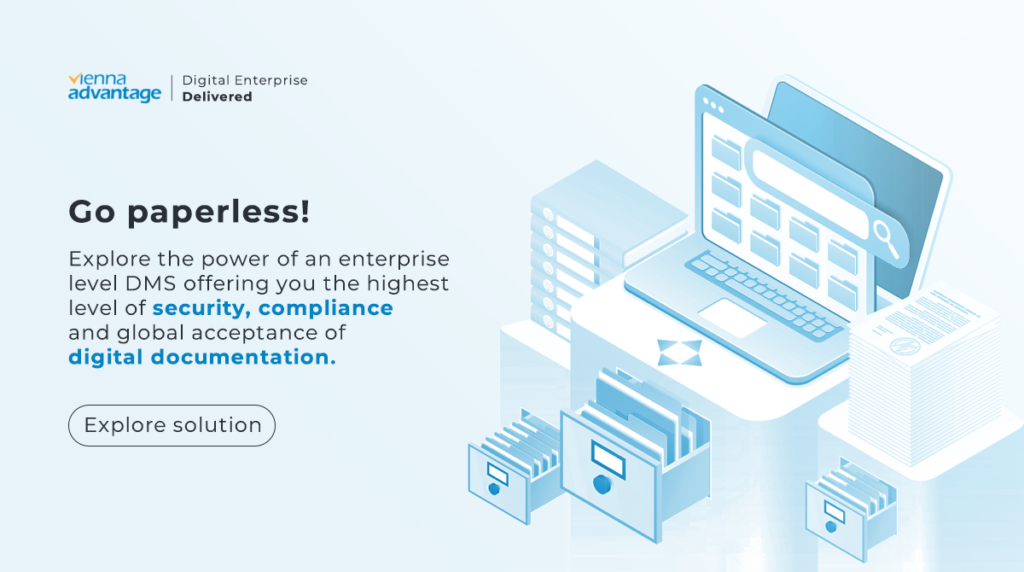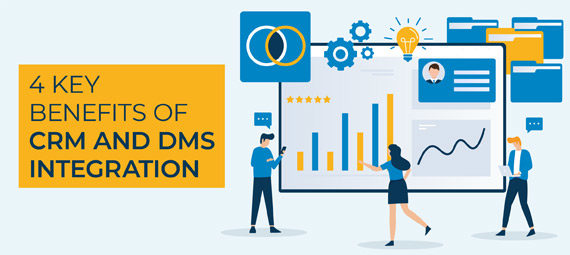Every sales team that uses a CRM system has experienced the challenge of recording sales activities in the CRM when document exchange is involved.
In many cases team members use alternatives such as emails, messaging applications, and other collaboration tools to exchange documents. Such an arrangement completely disrupts team activities, simply because there is never a single source of truth across the organization on any lead or prospect. Even though all sales activities are recorded in the CRM, the inability to attach documents to each such interaction hampers collaboration and makes sales teams inefficient.
For teams that have endured countless instances of frustration and days of delay, the solution is quite a straightforward one. It involves integrating the CRM system with an enterprise-grade Document Management System. In this article, we will examine the various benefits of CRM and DMS integration and recommend ways to achieve this setup.
#1 Document content consumption information

Your sales team sends several documents to prospects. These could be anything from product or service collaterals to proposal documents and business cases for your prospects. However, they never get any information on how the content of these documents is consumed by your prospects.
Would it not be useful to understand exactly which page of the collateral or which section of a proposal document did the reader spend the most amount of time? Which sections did they just gloss over, and which sections did they revisit? All such reader behavior can be captured if your CRM is integrated with a DMS. In such a setup, various documents (collaterals, proposals, and quotations) can be uploaded to the DMS, and sales reps can share the link of the document with leads and prospects. Now when an external business partner accesses those documents via the DMS link, precise user actions can be captured and used to improve the quality and structure of your content.
#2 CRM and DMS integration brings “Single Source of Enterprise Truth”

How many times have you been in a situation where a fellow sales rep has sent a proposal to a prospect and the rest of the team is unable to access the pricing terms because the document is locked in the sales rep’s email application? Or how often have you sent an outdated version of your product brochure to a prospect, only to realize later that there was a newer version of the collateral? With a DMS integrated with your CRM system, all sales personnel will have access to the most recent version of collaterals, making it easier for the entire salesforce to provide information on demand to leads and prospects. Additionally, sales reps would be able to upload all prospect-specific documents into a single repository, which would make your sales operations streamlined.
#3 Increase productivity and reduce repetitive tasks

A Document Management System provides an excellent mechanism to store various document formats and templates. It also means that changes need to be carried out at one central template for them to be relayed to the entire sales team. With CRM and DMS integration, every sales rep would have access to the same set of document templates. With the aid of these templates, sales teams can cut the time to create proposals and business cases and have ready-made models for any financial calculations that need to accompany these documents. Such a setup becomes possible when your CRM is integrated with a robust DMS and available to the entire salesforce that needs it.
#4 More than just document storage

Modern DMS solutions, such as those offered by VIENNA Advantage, have capabilities beyond pure document storage that could fundamentally change the way your salesforce gathers intelligence and reacts to them. For instance, advanced Document Management Systems have in-built Optical Character Recognition (OCR) capabilities that can read the content of documents stored in the system.
When the OCR is coupled with an indexing mechanism, the DMS becomes a powerful search tool that can retrieve relevant documents from a search key. When your sales personnel use such features, they would be able to upload company filing data and other publicly available documents on your leads and prospects and use the search and retrieve feature to glean invaluable insights from these documents. Having access to such integrated CRM and DMS solution can elevate the performance of your sales personnel and reduce turnaround time to requests from prospects to directly reduce your sales cycle.
Bottom line: CRM and DMS integration brings numerous advantages
The benefits from integrating CRM and DMS system are quite evident and it is intuitive to see how such integrated solution would benefit various stakeholders in your sales organization. This applies equally to both – the salesforce that is responsible for on-the-ground execution as well as for tactical and strategic decision making from sales leaders.
For the company’s salesforce, an integrated DMS can dramatically reduce the burden of repetitive documentation and allow them to focus on closing deals and meeting their sales targets. Also, collaborating with various teams – both within the sales organization and with others such as marketing and key account management – can be simplified, directly enhancing the overall effectiveness of the sales organization.
For the sales leadership, a DMS can provide crucial insights into the behavior of prospects and leads and how they react to various company collaterals and digital assets. This feedback can help improve the quality of the company’s digital assets and the outcome they drive.
It is important to view the DMS as a part of the enterprise core IT asset as opposed to considering it a peripheral solution that simply accomplishes digitalization tasks. As with any other technology, the real value is unleashed only when coupled with the ERP, which is central to an enterprise’s digital core.




